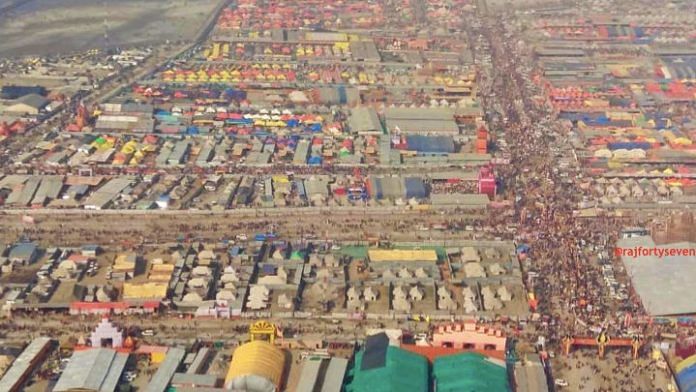ThePrint takes you on a journey of the Ardh Kumbh Mela in Prayagraj through satellite and aerial imagery.
The Kumbh Mela is an important part of Hinduism, and is considered a symbol of peace and harmony among all human beings. It has been a part of the UNESCO’s Intangible Cultural Heritage of Humanity list since 2017.
The city of Prayagraj, formerly Allahabad, is currently hosting the Ardh Kumbh — the comparatively smaller mela held halfway through the 12-year Kumbh cycle — and the UP government has undertaken massive efforts to provide a better experience to pilgrims.
ThePrint takes you on a journey of the Kumbh through satellite and aerial imagery.
The host city
It’s not just the name that has changed. Prayagraj is different now, featuring wide and clean roads. Roundabouts have been redesigned to make traffic flow smoother.
The entire city has been painted with decorative images pertaining to Kumbh festivities and other religious stories.

The Triveni Sangam
The Triveni Sangam is the holy confluence of three sacred rivers Ganga, Yamuna and Saraswati — the ‘lupt‘ or invisible river that remains present in the form of a ‘koop‘ (well) at the north-eastern corner of the fort.
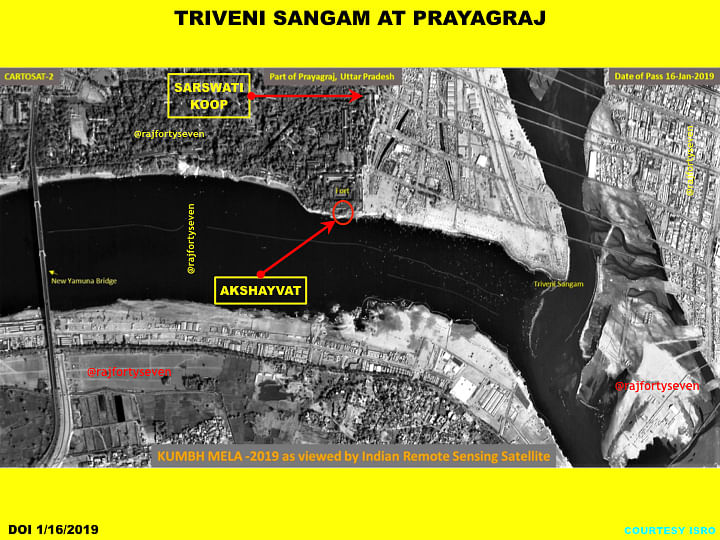
Pilgrims take holy dips at the Sangam, immersing themselves completely three times, praying for themselves the first time, for their families the second time, and for humanity the third time.
Traditionally, after the holy dip, pilgrims also worship at Saraswati Koop, Patalpuri, Akshayvat and Lete Hanumanji temples.
Evenings are generally reserved for Ganga aarti at the Triveni Sangam.
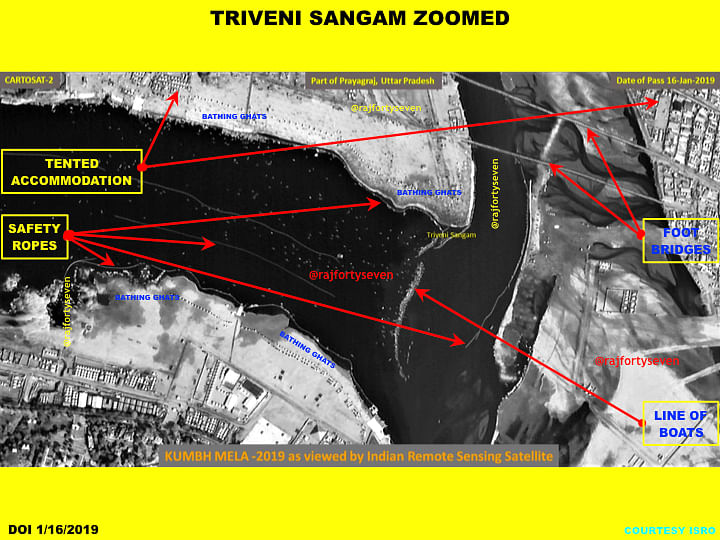
Safety & security arrangements
The district administration has made enormous safety and security arrangements for the event, which spans from 15 January to 4 March.
Satellite and aerial images show clearly all the safety ropes and other traffic management arrangements. The sea of humanity visiting Prayagraj is managed by barricades and 24×7 live CCTV monitoring.
Also read: 2019 Kumbh Mela is the costliest ever with a budget of Rs 4,200 crore
Tented accommodation
There are different types of tented accommodation pitched on all sides of both rivers. They belong to private companies, government organisations, hoteliers and many others.
They all have been allowed special areas with a wide distance between each tent, as also between group of tents.
This provides space for walkers as well as creating fire lanes in case of emergencies. Fire tenders and water tankers are also observed slightly away from the site, not seen in these images.
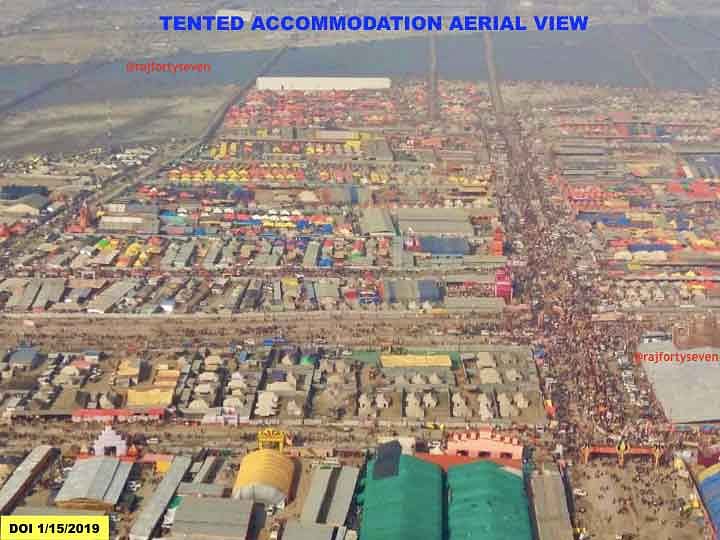
Foot bridges
The flow of the Ganga has been reduced to ensure safe water levels at the Triveni Sangam. Eighteen floating foot bridges have been laid to facilitate travelling across the Ganga to visit different ghats.
The sizes of these foot bridges vary from 2-6 metres.
The floats holding the bridges are large enough & close enough to each other to cater to a very large number of persons standing on the bridge, especially during the evening Ganga aarti.
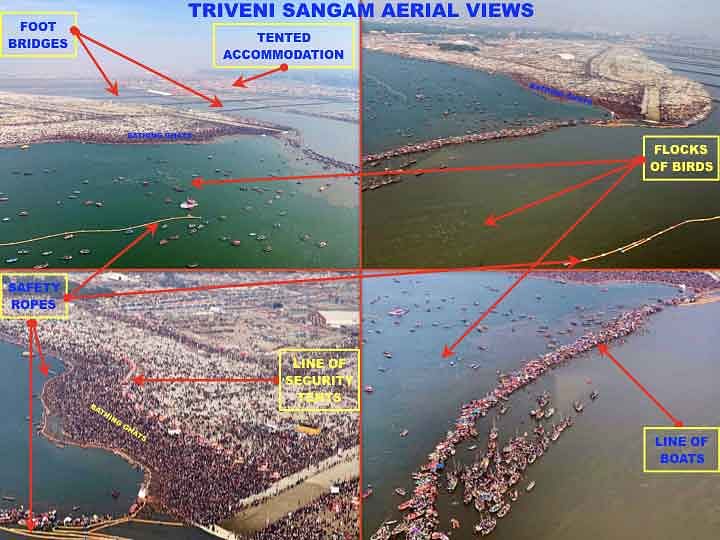
Bathing ghats
Numerous bathing ghats have been created to facilitate holy dips. They are constructed in stepped fashion to ensure that even children and old people have a safe walk up to the river.
Every ghat is barricaded and has a security personnel tent for management of devotees and to assist in case of emergencies.
The bathing ghats on the southern side of the Yamuna are larger, probably owing to shallow and smooth flow of water in the river.
The bathing ghats are barricaded on the river side by large floating ropes with red square buoys in between. Such safety ropes generally have environment friendly nets below up to ground level for safety.
The ropes on the northern side of the Yamuna and the western side of the Ganga are about 5-10 metres from the ghats. This provides enough space for devotees to take the holy dip, and keep them out of harm’s way.
Since the water levels are controlled to almost 1-1.5 metres, even children can see these safety ropes due to their bright colour.
Also read: Techies may have answer to Sabarimala, Ayodhya rows — but are temples or mosques ready?


